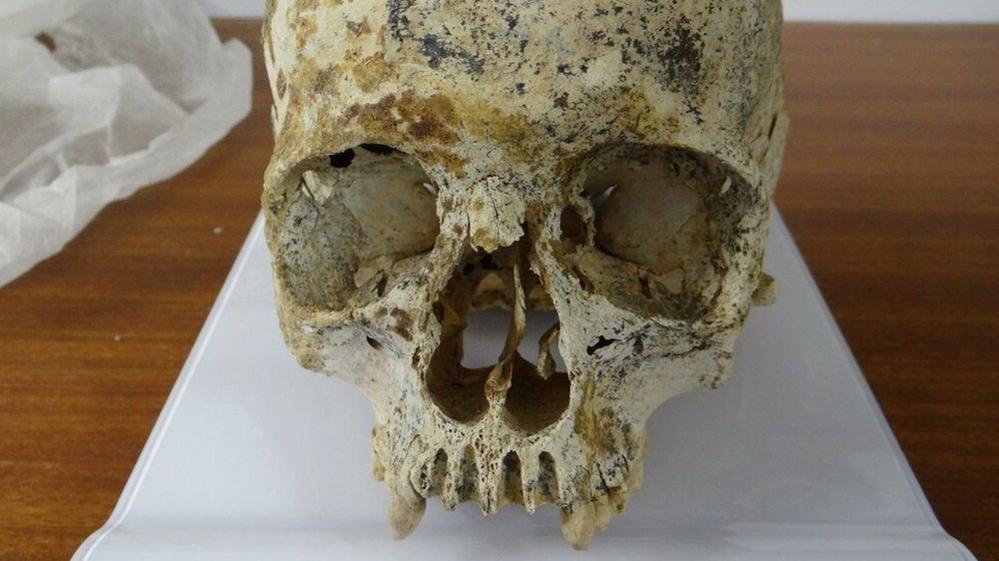Pollen adds to intrigue over Bronze Age woman 'Ava'
- Published
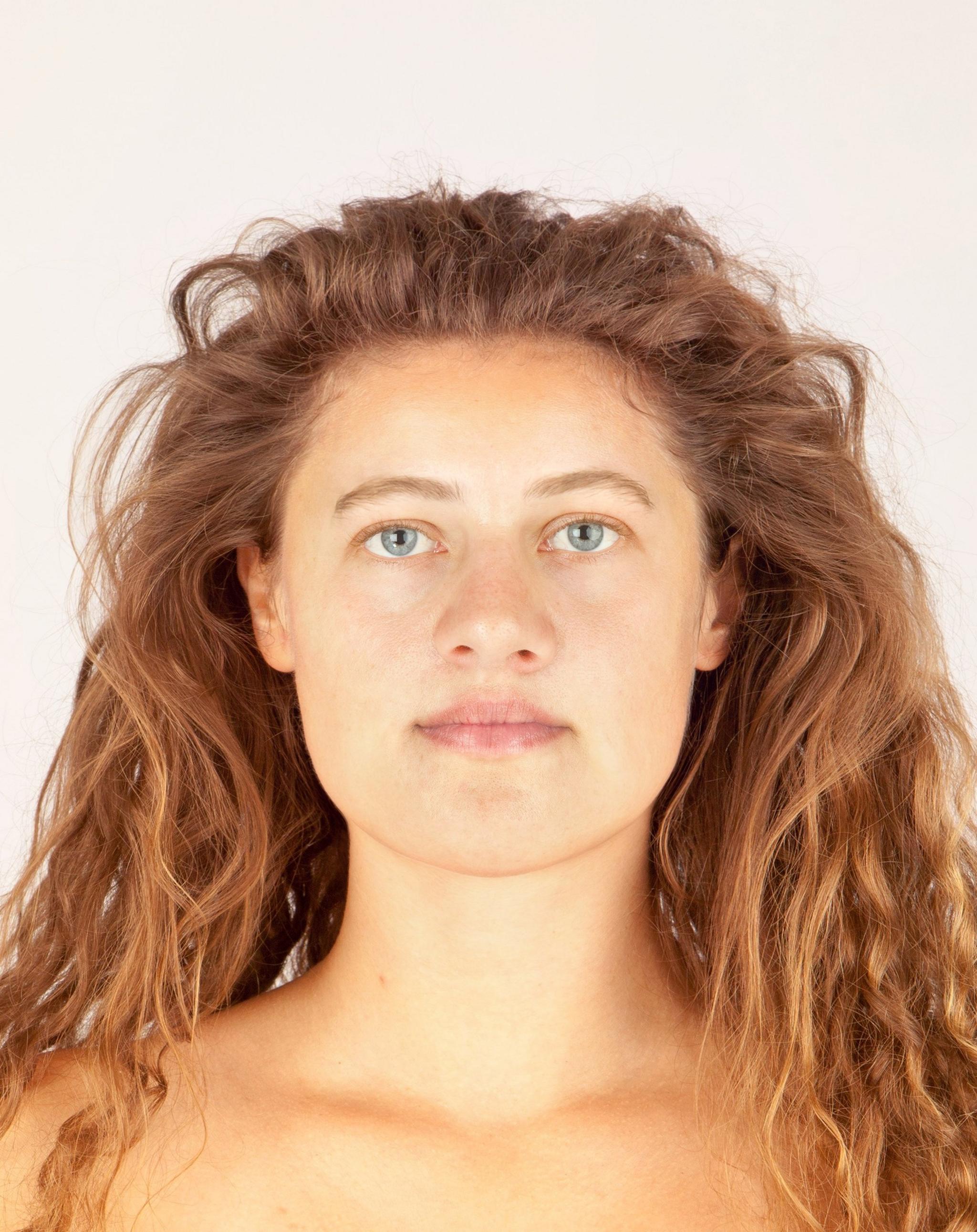
A facial reconstruction of Ava was made last year
Analysis of pollen found on pottery buried with a young woman more than 4,100 years ago has identified plants used for medicinal purposes.
The woman's bones, including a skull and teeth, were discovered at Achavanich in Caithness 30 years ago.
Known as "Ava", an abbreviation of Achavanich, she is the subject of a long-term research project managed by archaeologist Maya Hoole, external.
Ms Hoole said the presence of the pollen "raises interesting questions".
Last year, forensic artist Hew Morrison created a facial reconstruction of Ava.
Now the results of other research have been published.
Analysis of pollen recovered from a decorated beaker buried with Ava identified various plants and trees.
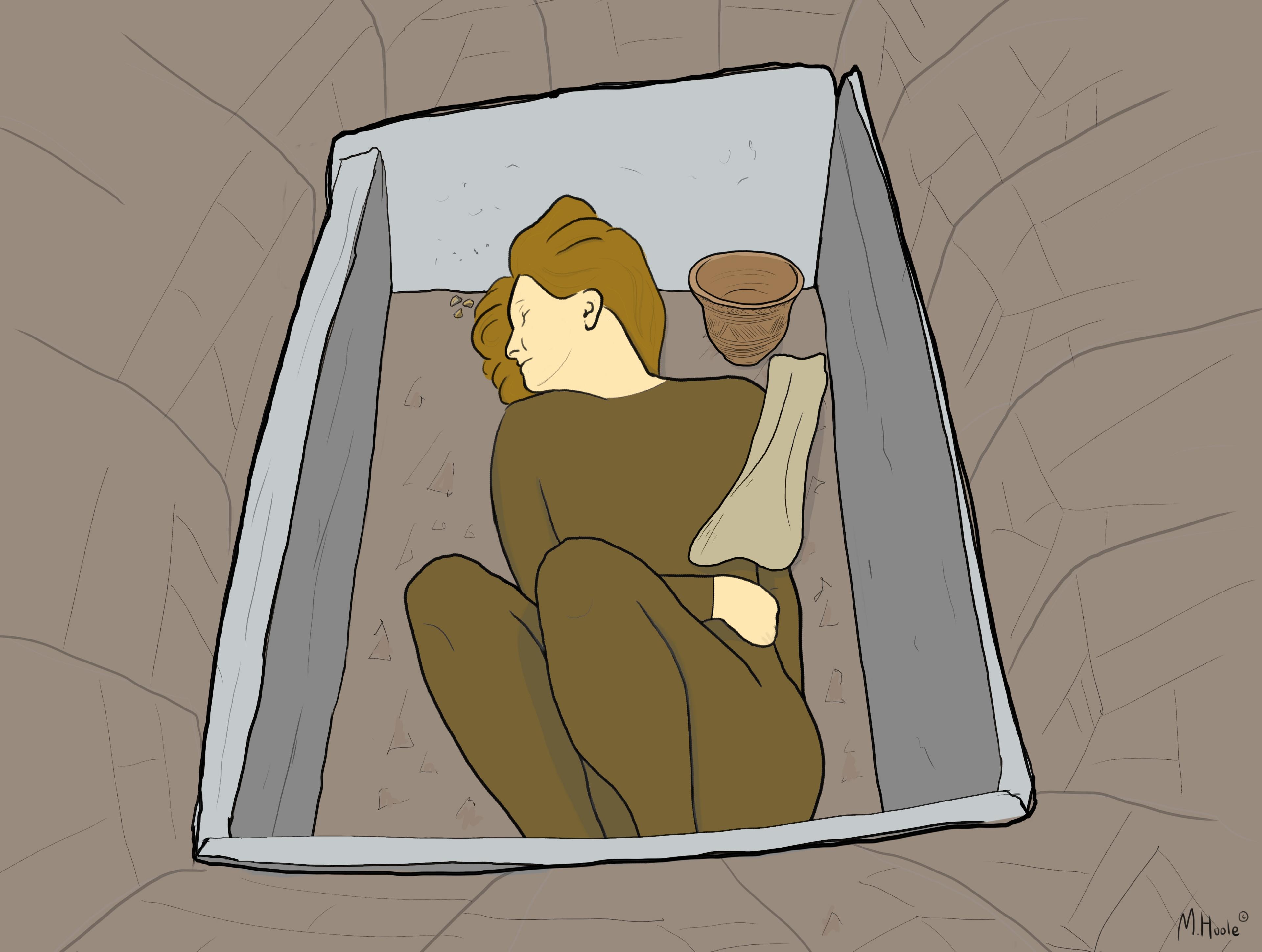
An illustration by archaeologist Maya Hoole of Ava's burial
Archaeologist Ms Hoole said: "Of the pollen recovered the majority were from trees and shrubs including birch, pine - most likely Scots pine - hazel and alder.
"Heather was also identified, as well as grasses, meadowsweet and St John's wort.
"The inclusion of meadowsweet proves interesting as it has also appeared at other Bronze Age burials elsewhere in Scotland.
"The presence of both meadowsweet and St John's wort may represent a deliberate inclusion of flowers within the burial. Interestingly, both of these plants are also considered to have medicinal properties."
The archaeologist added: "The presence of several different species of plant which are considered to have medicinal properties raises interesting questions: was this intentional, and was it in any way related to whatever caused the death of this individual?"
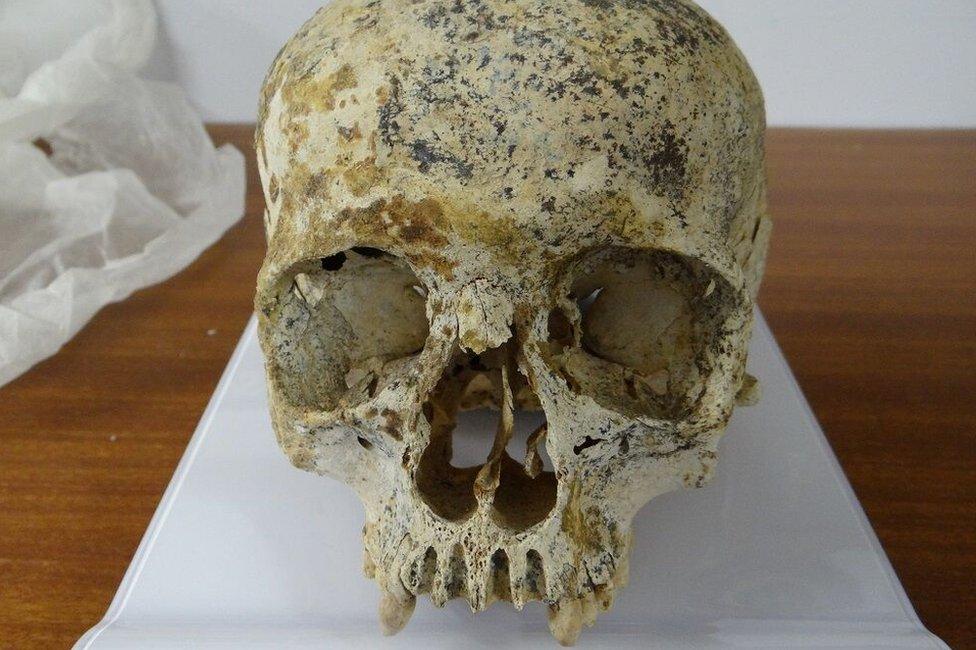
A skull and other remains were found at a Middle Bronze Age burial site in 1987
Other results of the latest research included:
Stable isotope analysis, funded by the Society of Antiquaries of Scotland and carried out by Dr Jane Evans and her team at Nerc, external, suggests that although buried two to three hours walk from the sea, Ava was not consuming any marine resources and was likely eating terrestrial based foods such as cattle and freshwater fish
The stable isotope analysis also suggests that Ava was likely local to the Caithness area, most likely to the west or south of her burial site, although not in the immediate surroundings
Radiocarbon dates, funded as part of a larger research project being undertaken at the Natural History Museum in London and carried out by SUERC, external in East Kilbride suggests Ava to be approximately 200 years earlier than originally thought. She is now considered to be more than 4,100 years old. She is currently the earliest identified individual from the Caithness area, and is among the earliest known Bronze Age burials from Scotland
The interpretation of the pollen analysis, (also funded by the Society of Antiquaries of Scotland and carried out by Dr Scott Timpany of the University of the Highlands and Islands, needs to be quite tentative as it recovered a huge amount of pollen, says Ms Hoole. However, it suggests that this part of Scotland was likely a mixture of woodland or heathland at this time, which is different to the current landscape which has no, or little, existing natural woodland. Ava was likely to have been alive before the majority of the Caithness landscape was deforested
Ava's remains, along with other artefacts found with her, are held in the care of Caithness Horizons museum in Thurso.
Unusually, the Bronze Age woman was buried in a pit dug into solid rock and her skull is an abnormal shape which some suggest was the result of deliberate binding.
It is believed Ava was part of a much wider European group known as the Beaker people.
Further research is to be done in an effort to shed more light on Ava and her burial.
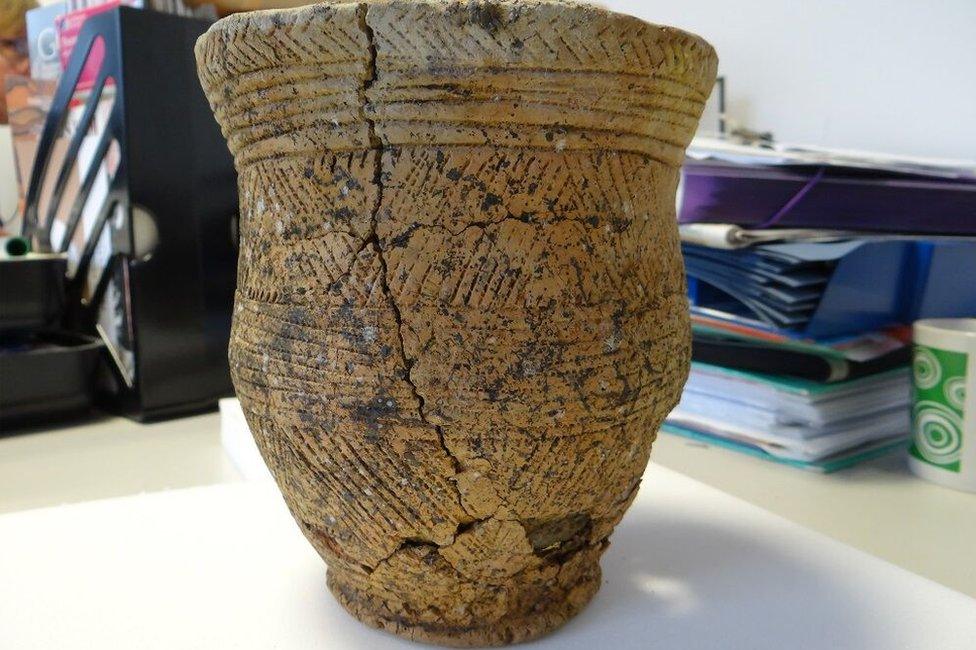
Ava was buried with a decorated beaker
All images copyrighted.
- Published29 July 2016
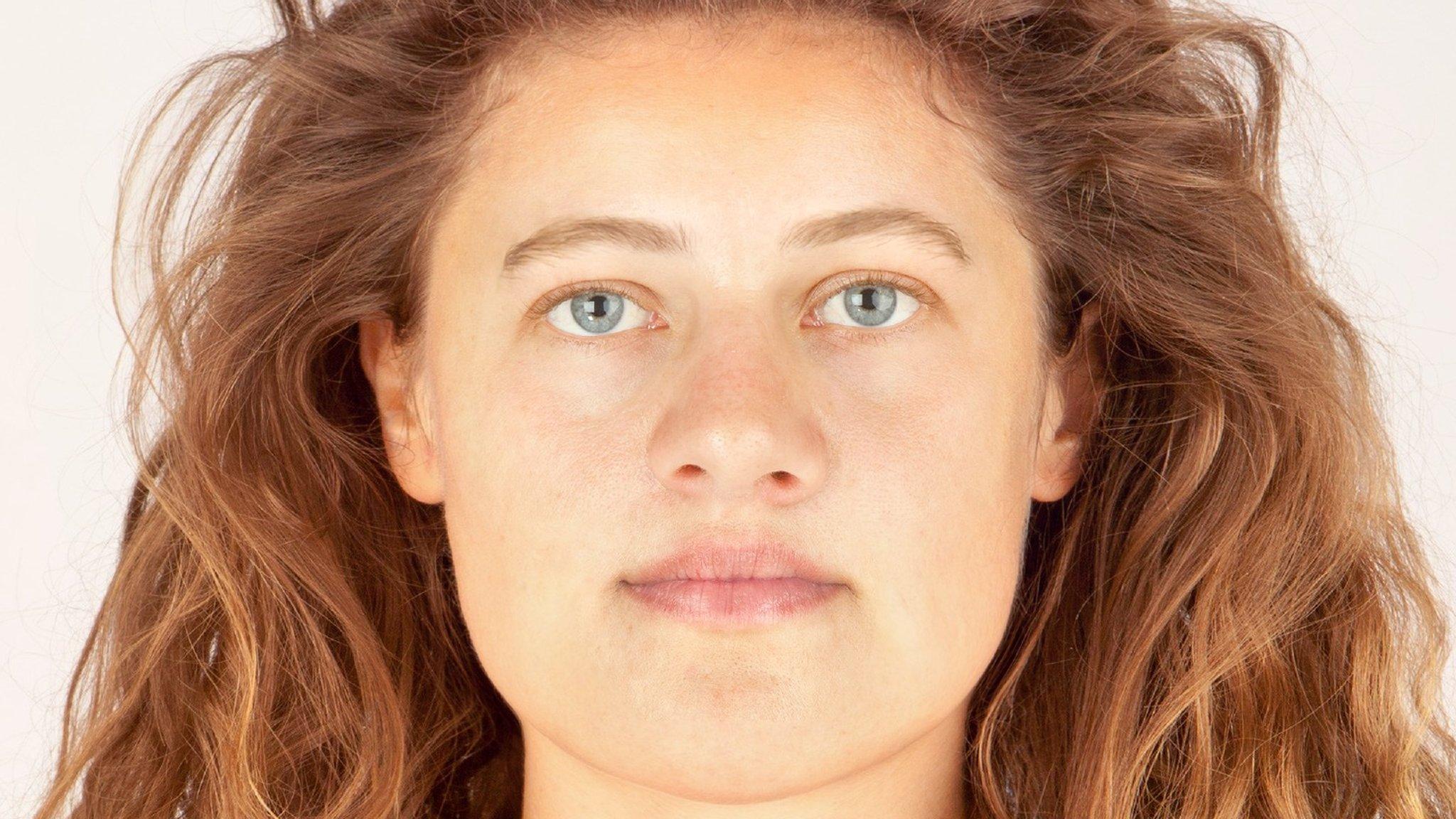
- Published12 February 2016
